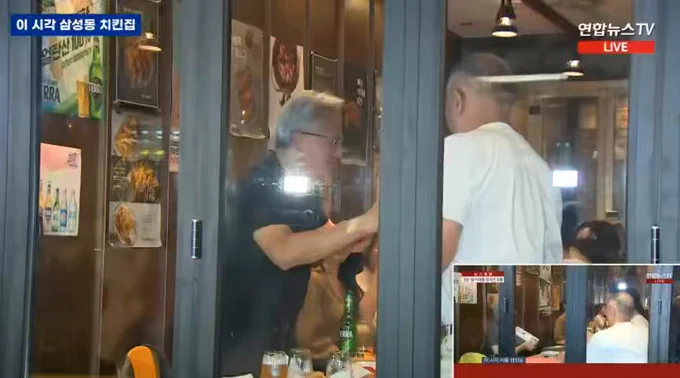Write on business with @workweekinc. Building a privacy-first AI research app (Bearly.AI) and LLM API management platform (Liona.AI)
My Saturday newsletter ➡️
Joined December 2017
- Tweets 80,196
- Following 4,231
- Followers 726,890
- Likes 195,446
Pinned Tweet
Hermès has perfected the psychology of scarcity and demand.
The CEO of the ~$250B French luxury giant says Hermès “creates desire” by selling “time”. This concept of “time” means heritage, craftsmanship and making customers wait.
I wrote more here:readtrung.com/p/how-hermes-s…
Trung Phan retweeted
🤯🤯🤯
I've been reviewing the content for next week's Fintech Takes: Builders Summit and it is blowing my mind.
Beyond excited.
Nike just dropped an ad to celebrate the Dodgers World Series win…with Kendrick Lamar’s “Squabble Up”
Incredible game and series.
Shohtani knocking off those life goals.
Shohei Ohtani wrote his life goals in high school. He wanted to win 2 World Series by age 32.
He is 31 now and is the starting pitcher for Game 7 against the Blue Jays tonight to try and make that happen (he wanted a first daughter by 31 and that happened earlier this year).
More details:
> Sheridan will keep makign TV shows with Paramount through 2028
> He can start making films for NBCUniversal next year
> Paramount owns IP for his current TV output (see below) and also for upcoming shows (Dutton Ranch, Y: Marshals, The Madison and 1944)
> “Call of Duty” film he’s writing and Pete Berg directing is also under Paramount
Trung Phan retweeted
Been waiting for someone to call this out. Jesse is spot on.
So many exaggerations, half truths, and sometimes out right lies told about the founding, building, and exit of Hustle Con Media Inc.
The more you dig…
Good profile of Din Tai Fung CEO.
Says will never go public because doesnt want growth pressure and lose control of quality: bloomberg.com/news/features/…
I wrote about why Taylor Sheridan left Paramount to go to NBCUniversal in a $1B deal.
It’s a shock because he turned “Yellowstone” into IP worth $3B (the most viewed show on TV) and made 8 more shows that carried Paramount+ streaming.
What happened?
readtrung.com/p/taylor-sheri…
Berkshire and Buffett are sitting on $382B of cash (added ~1/2 in the past 18 months). Here are companies they could just YOLO that are in the ballpark of that amount:
$411B (ASML)
$404B (Costco)
$383B (Home Depot)
$355B (LVMH)
$261B (Morgan Stanley)
$260B (Hermes)
$2B (Wendy’s)
Chris Farley doing his Matt “Van Down By The River” Foley character for a Halloween bit in 1993 is probably SNL’s best Halloween skit ever.
Watching David Spade, Christian Slater, Phil Hartman and Melanie Hutsell try to stay in character (and not break out laughing) is amazing.
Other than candy makers (and Viet restaurants), the biggest winner rn is Spirit Halloween.
It runs 1,450 pop-up shops a year, more than Trader Joe’s or Whole Foods (500-600 stores). It’s annual sales are $600-700m, basically all in September and October.
readtrung.com/p/the-650m-spi…
Your bearish? Jensen Huang is chugging beers and eating Korean fried chicken with Samsung Chairman Lee Jae-yong and Hyundai Chairman Chung Eui-sun in Seoul to celebrate a 250,000K GPU sovereign AI data centre and your bearish?
anyway, here’s my 2,000 word deep dive on why Taylor Sheridan left Paramount to kling NBCUniversal in a $1B deal: readtrung.com/p/taylor-sheri…
Trung Phan retweeted
CVS finally wrote down its acquisition of Oak Street Health.
A quick $5.7B haircut.
Honestly, kudos to the OSH folks for selling at the absolute top.
Also, shareholders should never vote 'yes' on a CVS proposed acquisition ever again (unless it's a massive health insurance company)
speaking of Vietnamese cuisine
The invention of bánh mì is a combination of climate, trade and urban layout of Saigon in late-19th century designed by French colonist.
When the French captured the area in 1859, most economic activity in the region took place along the Saigon river.
The population built makeshift homes tightly bundled by the river banks. Outgrowth from this eventually lead to narrow alleyways between many buildings that is trademark of the city (the Khmer named the region Prey Nokor then French renamed it Saigon and then it was renamed to Ho Chi Minh City in 1976 after end of Vietnam War).
Over decades, the French created European street grids and built wide Paris-type boulevards in the city to funnel commerce to larger markets (also make the city easier to administer).
It was at these markets that French baguettes were introduced and traded.
Bánh mì bread is known for being flaky and crispy on the outside while fluffier on inside (so god damn good).
Two features of Saigon helped create this texture:
▫️Climate: The heat and humidity in Southeast Asia leads dough to ferment faster, which creates air pockets in bread (light and fluffy).
▫️Ingredient: Wide availability of rice meant locals added rice flour to wheat flour imports (which were quite expensive). Rice flour is more resistant to moisture and creates a drier, crispier crust.
Fast forward to the 1930s: the French-designed street layout is largely complete. Now, the city centre has wide boulevards intersected by countless narrow alleyways.
The design was ideal for street vendor carts. These businesses were inspired by shophosue of colonial architecture to sell all types of goods as chaotic traffic rushed by.
Vietnam has some of the most slapping rice and soup dishes, but many people on the move in the mornings wanted something more portable and edible by hand.
Bánh mì was traditionally upper class fare but it met the need for on-the-go food.
Just fill the bread with some Vietnamese ingredients (braised pork, pickled vegetable, Vietnamese coriander, chilies) along with French goodies (pate).
Pair it with cà phê sữa đá (aka coffee with condensed milk aka caffeinated crack) and you’re laughing.


























